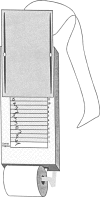Abstract
The present paper provides a primer on percentile reinforcement schedules, which have been used for two decades to study response differentiation and shaping in the laboratory. Arranged in applied settings, percentile procedures could be used to specify response criteria, standardizing treatment across subjects, trainers, and times to provide a more consistent training environment while maintaining the sensitivity to the individual's repertoire that is the hallmark of shaping. Percentile schedules are also valuable tools in analyzing the variables of which responding is a function, both inside and outside the laboratory. Finally, by formalizing the rules of shaping, percentile schedules provide a useful heuristic of the processes involved in shaping behavior, even for those situations that may not easily permit their implementation. As such, they may help further sensitize trainers and researchers alike to variables of critical importance in behavior change.
Keywords: shaping, response differentiation, percentile schedules, reinforcement density, operant conditioning
Full text
PDF





















Images in this article
Selected References
These references are in PubMed. This may not be the complete list of references from this article.
- Arbuckle J. L., Lattal K. A. Molecular contingencies in schedules of intermittent punishment. J Exp Anal Behav. 1992 Sep;58(2):361–375. doi: 10.1901/jeab.1992.58-361. [DOI] [PMC free article] [PubMed] [Google Scholar]
- Galbicka G. Differentiating the behavior of organisms. J Exp Anal Behav. 1988 Sep;50(2):343–354. doi: 10.1901/jeab.1988.50-343. [DOI] [PMC free article] [PubMed] [Google Scholar]
- Galbicka G., Fowler K. P., Ritch Z. J. Control over response number by a targeted percentile schedule: reinforcement loss and the acute effects of d-amphetamine. J Exp Anal Behav. 1991 Sep;56(2):205–215. doi: 10.1901/jeab.1991.56-205. [DOI] [PMC free article] [PubMed] [Google Scholar]
- Galbicka G., Kautz M. A., Jagers T. Response acquisition under targeted percentile schedules: a continuing quandary for molar models of operant behavior. J Exp Anal Behav. 1993 Jul;60(1):171–184. doi: 10.1901/jeab.1993.60-171. [DOI] [PMC free article] [PubMed] [Google Scholar]
- Galbicka G., Kautz M.A., Ritch Z.J. Reinforcement loss and behavioral tolerance to d-amphetamine: using percentile schedules to control reinforcement density. Behav Pharmacol. 1992 Dec;3(6):535–544. [PubMed] [Google Scholar]
- Galbicka G., Platt J. R. Parametric manipulation of interresponse-time contingency independent of reinforcement rate. J Exp Psychol Anim Behav Process. 1986 Oct;12(4):371–380. [PubMed] [Google Scholar]
- Galbicka G., Platt J. R. Response-reinforcer contingency and spatially defined operants: testing an invariance property of phi. J Exp Anal Behav. 1989 Jan;51(1):145–162. doi: 10.1901/jeab.1989.51-145. [DOI] [PMC free article] [PubMed] [Google Scholar]
- Kuch D. O., Platt J. R. Reinforcement rate and interresponse time differentiation. J Exp Anal Behav. 1976 Nov;26(3):471–486. doi: 10.1901/jeab.1976.26-471. [DOI] [PMC free article] [PubMed] [Google Scholar]
- Machado A. Operant conditioning of behavioral variability using a percentile reinforcement schedule. J Exp Anal Behav. 1989 Sep;52(2):155–166. doi: 10.1901/jeab.1989.52-155. [DOI] [PMC free article] [PubMed] [Google Scholar]
- Platt J. R., Kuch D. O., Bitgood S. C. Rats' lever-press durations as psychophysical judgements of time. J Exp Anal Behav. 1973 Mar;19(2):239–250. doi: 10.1901/jeab.1973.19-239. [DOI] [PMC free article] [PubMed] [Google Scholar]
- Platt J. R. Motivational and response factors in temporal differentiation. Ann N Y Acad Sci. 1984;423:200–210. doi: 10.1111/j.1749-6632.1984.tb23431.x. [DOI] [PubMed] [Google Scholar]



